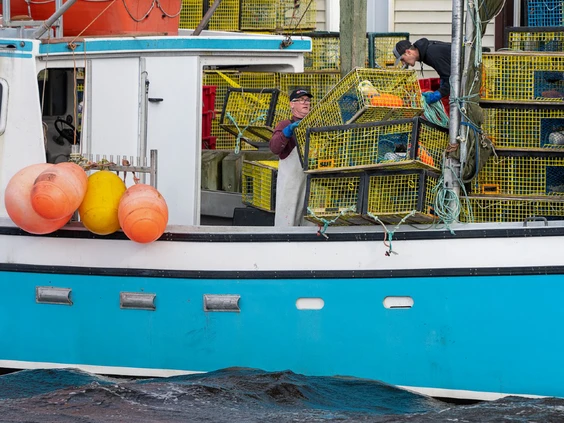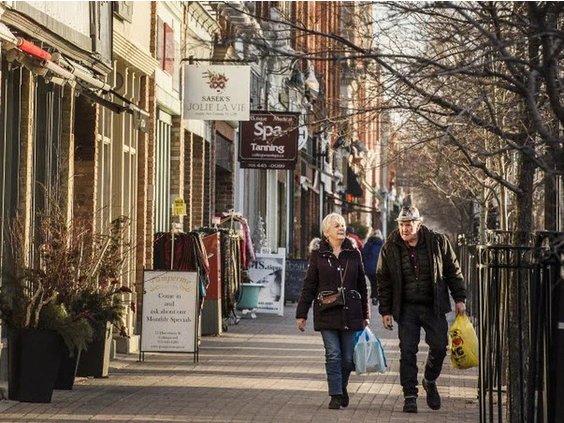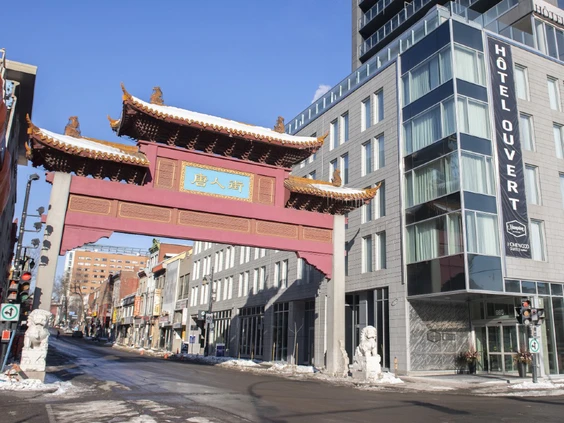


OTTAWA — Statistics Canada says the national population almost hit 37 million last year as it grew at the fastest rate among G7 nations.
The agency says Canada’s population was just over 36.9 million on census day last year, growing by 5.2 per cent between 2016 and 2021.
The five-year growth rate was double that of any peer country in the G7, and Statistics Canada says most of the growth happened prior to the onset of the pandemic in 2020.
Statistics Canada says the main reason for the slowdown in growth was border restrictions that, while meant to slow the spread of COVID-19, also slowed the pace of newcomers arriving in Canada.
The agency says population growth was at a record high before the pandemic, and then slowed to its lowest rate in a century in 2020.
Statistics Canada says there were about 1.8 million more people calling the country home in 2021 compared with 2016, with four in every five being immigrants.
Immigration has been key to driving population growth as the birthrate has declined, but the agency notes that rate in 2021 hit its lowest level of record.
Statistics Canada says some of that slowdown might be pandemic-induced.
At this point, the agency says, Canada’s isn’t headed to a situation where deaths outnumber births like in Italy and Japan, at least within the next 50 years.
The details released this morning are the first set of findings from last year’s census taken against the backdrop of the COVID-19 pandemic.

Statistics Canada says that in the past five years, the three Maritime provinces have largely succeeded in reversing a decades-long decline in population, thanks in part to a steady influx of Canadians from other provinces — particularly Ontario and Alberta.
Patrick Brannon, senior researcher at the independent Atlantic Provinces Economic Council, said the numbers illustrate a reversal for a region once famous for routinely losing many of its young people to other provinces. In fact, for the first time since the 1940s, the Maritimes grew at a faster pace than the Prairie provinces.
“We’re now seeing a lot of people, especially in the second half of 2020 and the first half of 2021, looking to get out of the big cities and go to smaller locations for more space and cheaper housing costs,” Brannon said. “The pandemic accelerated some of those trends”
By contrast, the population of Newfoundland and Labrador declined by 1.8 per cent to 510,550 between 2016 and 2021, mainly because of slumping oil prices and the winding down of some megaprojects in recent years, Brannon said. Aside from the Northwest Territories, Newfoundland and Labrador was the only province to post a population decline.
“People are cashing out their nest eggs and heading to (the Maritimes), where they can buy a house for a quarter of the price and have a better quality of life,” Brannon said. “A lot of people saw (the pandemic) as an opportunity to get out of the big city and head to a place they felt more safe.”
In the past five years, the population of Prince Edward Island grew by eight per cent — its highest population growth rate on record — to reach 154,331 in 2021. At that rate, P.E.I. was the fastest-growing province in Canada, though Yukon held top spot overall with a growth rate of 12.1 per cent.
Meanwhile, New Brunswick and Nova Scotia grew at their fastest pace since the early 1970s. Nova Scotia’s population grew by five per cent to reach 969,383 residents, and New Brunswick posted an increase of 3.8 per cent to reach 775,610 people.
The new census figures also show the region has succeeded in attracting a larger number of immigrants from other countries. New Brunswick, Nova Scotia and Prince Edward Island welcomed a record number of immigrants between 2016 and 2021, the vast majority arriving prior to the pandemic.

Canada’s most populous province grew at a faster pace than the rest of the country overall over the last five years, thanks largely to immigration.
Some of the most dramatic local growth happened outside of Ontario’s largest urban areas. A number of First Nations communities were among those with the largest population bumps, and towns like Collingwood and Wasaga Beach were among the fastest-growing areas in the country.
Smaller urban areas known as tourist destinations with proximity to nature — within driving distance of larger cities — attracted migrants from elsewhere in Ontario. The city of London, Ont., meanwhile, saw a 10 per cent population bump that was mainly due to immigration.
Here’s a look at the data.
2021 population: 14,223,942
2016 population: 13,448,494
Population percentage change: 5.8
Population density per square kilometre: 15.9
Land area in square kilometre: 892,411.76
Some communities with the most growth:
East Gwillimbury, 44.4 per cent
The Blue Mountains, 33.7 per cent
New Tecumseth, 28.3 per cent
Thorold, 26.7 per cent
Seguin, 22.7 per cent
Some communities with the least growth:
Dryden, -4.7 per cent
Bayham, -4.1 per cent
Fort Frances, -3.5 per cent

Data from the 2021 census shows that Quebec’s share of the Canadian population declined for the 11th consecutive census.
Quebec was home to 23 per cent of Canadians in 2021, down from 23.2 per cent in 2016, as its population grew by 4.1 per cent between 2016 and 2021. While that was ahead of the previous census, when Quebec grew by 3.3 per cent, it remained below the national growth rate of 5.2 per cent.
The Montreal region saw its population grow 4.6 per cent between 2016 and 2021, up from 4.2 per cent in the previous census.
Statistics Canada said that growth was driven by immigration from 2016 to 2019, but that the province’s largest urban area saw its population decline by 0.6 per cent between July 1, 2020, to July 1, 2021, as it lost people to other Quebec regions.
The federal statistics agency said downtown Montreal had the highest growth rate in the metropolitan region, 24.2 per cent. It’s the second highest downtown growth rate in the country. Suburbs more than 30 minutes from downtown Montreal grew by seven per cent, a faster pace than the other parts of the city and suburbs closer to downtown.
2021 population: 8,501,833
2016 population: 8,164,361
Population percentage change: 4.1
Population density per square kilometre: 6.5
Land area in square kilometres: 1,298,599.75
Communities that grew the most:
Saint-Apollinaire, 30.4 per cent
Bromont, 25.6 per cent
Carignan, 24.1 per cent
Saint-Zotique, 21.2 per cent
Mirabel, 21 per cent
Communities that grew the least:
Sainte-Anne-des-Monts, -4.9 per cent
Port-Cartier, -4.2 per cent
Baie-Comeau, -3.9 per cent
Kirkland, -3.7 per cent
Chibougamau, -3.6 per cent

For the first time in years, Alberta’s growth has lagged behind the national average. Its 4.8 per cent growth rate between 2016 and 2021 was slightly below the national mark of 5.2 per cent. Only two of Canada’s fastest-growing municipalities were Albertan and Wild Rose Country had more than its share of communities losing population. Still, the province now has more than 4.2 million people and its capital of Edmonton has pushed past the million-person mark for the first time.
2021 population: 4,262,635
2016 population: 4,067,175
Population percentage change: 4.8
Population density per square kilometre: 6.7
Land area in square kilometre: 634,658.27
Communities that grew the most:
Cochrane, 24.4 per cent.
Airdrie, 20.3 per cent.
Beaumont, 19.7 per cent.
Mackenzie County, 14.6 per cent.
Canmore, 14.3 per cent.
Communities that grew the least:
Athabasca County,-11.6 per cent.
Lac la Biche County, -7.9 per cent.
Brazeau County, -7.6 per cent.
Barrhead County No. 11, -6.5 per cent.
Greenview No. 6, -6.2 per cent.
Saskatchewan experienced slower growth in the last few years. The province’s population grew 3.1 per cent between 2016 and 2021. That’s less than half the 6.3-per-cent growth it saw in the previous census. There are now 1,132,153 Saskatchewanians. Almost half — 43 per cent — live in the two largest cities, Saskatoon and Regina.
Here’s a look at the data.
2021 population: 1,132,153
2016 population: 1,098,352
Population percentage change: 3.1
Population density per square kilometre: 2.0
Land area in square kilometre: 577,060.4
Communities that grew the most:
Warman, 12.7 per cent.
Martensville, 9.3 per cent.
Saskatoon, 7.7 per cent.
Regina, 5.3 per cent.
Prince Albert, 5.1 per cent.
Communities that grew the least:
Estevan, -5.5 per cent.
North Battleford, -3.3 per cent.
Moose Jaw, -0.7 per cent.
Melfort, 0.6 per cent.
Meadow Lake, 0.4 per cent.
Canada’s Keystone Province kept close to the national growth average in the most recent census. There were five per cent more Manitobans than at the time of the 2016 census, bringing the total to 1,342,153. They were highly concentrated in the capital city of Winnipeg, which has 56 per cent of the province’s entire population and grew at a rate of 6.3 per cent.
Here’s a look at the data.
2021 population: 1,342,153
2016 population: 1,278,365
Population percentage change: 5.0
Population density per square kilometre: 2.5
Land area in square kilometre: 892,411.76
Communities that grew the most:
Niverville, 29 per cent.
West St. Paul, 24.5 per cent.
Neepawa, 23.3.
Morden, 14.5 per cent.
Macdonald, 13.4 per cent.
Communities that grew the least:
Thompson, -4.7 per cent.
Rhineland, -2.1 per cent.
St. Andrews, -1.6 per cent.
Portage la Prairie (Rural Municipality), -1.2 per cent.
Portage la Prairie (City), -0.3 per cent.
